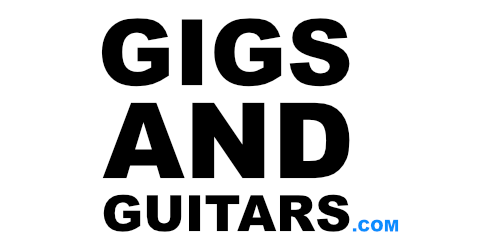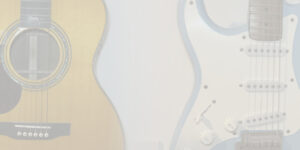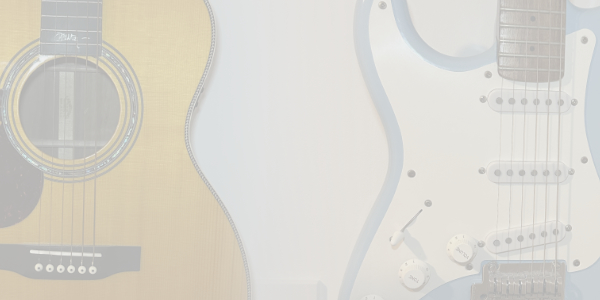
How to use an Overdrive Pedal – 6 ways to use an Overdrive pedal
Introduction
What is the most popular guitar pedal? It has to be the humble overdrive pedal! They can be simple, or they can have loads of controls and extra features, but at their core, they all work in a similar way. However, there are countless ways to use an overdrive pedal! In this article, we’re going to explore some of our favourite ways to use an overdrive pedal.
Our goal is to ensure that anyone with any kind of overdrive pedal can follow along and achieve these sounds! Most overdrive pedals should be able to replicate these tones. All we’ll be using are Gain, Volume, and Tone controls. We may even demonstrate a few different overdrive pedals to show that it really doesn’t matter which one you use! So, let’s dive right into the setup and gear we’ll be using.
All links in this article are affiliate links. Clicking them won’t cost you anything, but it helps support our site at no extra cost to you!
The Gear used!
The Pedals
For this test, we used two pedals: the Ibanez Tube Screamer Mini (Review Here). We chose this pedal because many of you likely own one in some form. It colors the sound and has a very distinct tone. The other pedal we used is the Behringer Klon, a clone of the famous Klon circuit—renowned for being a “transparent” overdrive (Full Review Here).
These are two of the most commonly purchased overdrive pedals, and most overdrive circuits are based on one of these designs. If you want to purchase either of these pedals, you can find the links below.
The Amp
For the amp, we used the one we rely on for almost all of our reviews: the Revv D20 (Full Review Here). This amp is super clean, beautifully voiced, and features a single channel—which will become important later! The amp itself isn’t the key factor here; rather, it’s the tone you get from the amp that matters, which we’ll break down in each segment. If you’re interested in the Revv D20, you can find the links below.
The Guitar
For the guitar, we used my LT Custom Guitars Custom Strat (Full Article here). I know this guitar inside and out, making it the perfect choice for these examples. With its three higher-output single-coil pickups, this guitar allows us to demonstrate the wide range of tones and effects you can get when you use an overdrive pedal. If you want more information on LT Custom Guitars, you can find the links below.
The Sounds
Below is the full video showcasing all the sounds and examples! We’ve split the video into sections that match the breakdown below. As mentioned, all the sounds use the gear and equipment we listed earlier. Every tone was recorded using the Revv D20’s direct out, running through a 4×12 “Marshall-like” cab.
In each section below, we’ve included timestamps so you can easily jump to the specific sound or example you’re looking for. If you enjoy the video and want to see more content like this, be sure to check out our YouTube channel and hit subscribe! Subscribing helps the channel grow, boosts our videos so more people can discover them, and allows us to keep creating amazing content.
Underdrive
Sometimes you find you need a gain or crunch sound, but you don’t want it to be loud or in front of the band. This is a sound that you will find yourself using a lot if you are part of a wedding or function band. You need some grit and gain but maybe at a slightly lower volume! Well, using an overdrive as an underdrive pedal will allow you to get this sound. This is a setting I don’t really see a lot of people use much, and I don’t understand why! It can be a cool sound and super useful once you know how to use it.
Start by setting up your amp with a nice core tone! Get the gain and volume to a location you like, and then switch on the overdrive and bring the volume down and gain up! The aim is to add more gain while bringing the volume down a few dB.
The great use for this is to use it like you would with a boost but the opposite way. So you would set up your amp for your lead sound, then hit the pedal to bring the volume down! This is mainly if you really like the gain and drive sound in your amp and want those for your lead tones. You can achieve that, then use the pedal to bring the volume down while keeping the gain at a similar level. Super useful and really fun to play with.
"A key factor here is that your amp needs to have a lot of headroom! If your amp is already being pushed to its limits, adding a volume boost won’t actually make it louder"
Boost
This is how most people will use an overdrive pedal! As a boost for either extra sauce to your sound or as a solo boost! So, let’s talk about each scenario—whether you’re using it for extra sauce or as a volume boost.
When using your pedal as a volume boost for solos, you’ll find that you won’t need much gain at all! It will mostly come down to volume and a little bit of tone. Pedals like the Tube Screamer and Klon are perfect for this, as they also have a slight mid-hump, helping your guitar cut through the mix. Set up your sound as you normally would, then push the volume further with your overdrive pedal.
A key factor here is that your amp needs to have a lot of headroom! If your amp is already being pushed to its limits, adding a volume boost won’t actually make it louder—it will just add more gain. So, having enough headroom is very important!
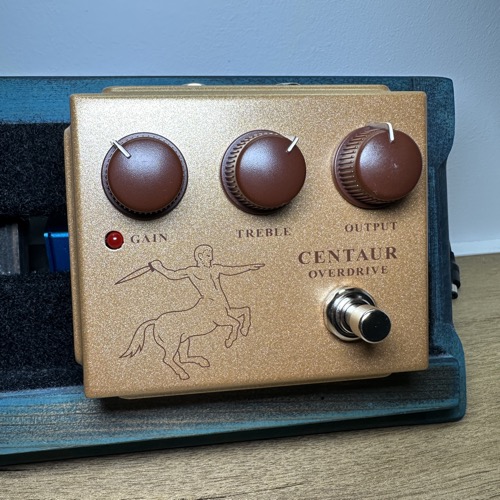
When using it as a bit of extra sauce, also known as an “always-on” pedal, this allows you to push your amp into its sweet spot and use your guitar’s volume control to adjust the gain. Start by setting your guitar’s volume to 7-8, then dial in your amp to a clean setting you like. Now, switch on your overdrive and bring up the volume until you get a sound you’re happy with.
This will give you a warm, dynamic rhythm tone that you can clean up by rolling back your volume. However, turn your guitar’s volume to 10, and you’ll get a high-gain solo boost!
Boost another Drive pedal
A great way to use an overdrive pedal is to stack it with another overdrive pedal! This allows you to have two separate gain stages that can be combined for a third level of gain!
My favorite way to do this is to have the first overdrive pedal set with low gain and high volume (the same way you would if you were using it as a boost). Then, set your second overdrive pedal for low gain and adjust the volume to your preference. When you switch the second pedal on, you’ll get a nice overdrive sound, but when you engage the first overdrive pedal, it will push the second one, creating even more gain! This is a great way to get more tones out of your pedals.
The principle is simple; however, the pedals you choose can have a huge effect on the tone! You can shape the EQ of the final sound or even tweak the sound going into the second overdrive pedal.
For example, you could push the volume and treble on the first pedal to overdrive the second pedal while emphasizing the high frequencies, creating a treble boost effect. Or, you could use a Tube Screamer-style pedal to boost the mids, helping your guitar cut through the mix and stand out against other band members.
There are multiple ways to experiment with this technique, and many different pedal combinations to try. Just grab two overdrive pedals, experiment with their settings, and find a stacked overdrive tone that works for you!
"A few things to consider: most overdrive pedals can do this, but some will work better than others!"
Gently Push for your amp
If you have an amp that you love the overdrive sound of but can’t run it loud enough to get that tone, you can use an overdrive pedal to push the amp’s front end while keeping the overall volume lower. This allows you to drive the ampproperly and still get those sweet tones!
This is really easy to do. All you need to do is set the amp to a comfortable volume, then switch the overdrive pedal on and adjust the volume and gain to dial in a sound you like! You’ll mainly want to push the amp with volume, but adding a bit of gain can introduce extra saturation, which might be a tone you enjoy.
A few things to consider: most overdrive pedals can do this, but some will work better than others! For example, you’ll want to use an overdrive pedal that doesn’t color your tone too much. A Tube Screamer, for instance, adds a distinct mid-hump, which could alter your amp’s natural sound. So, when picking an overdrive pedal for this purpose, it’s important to consider how much it affects your tone.
“Amp Like” Gain
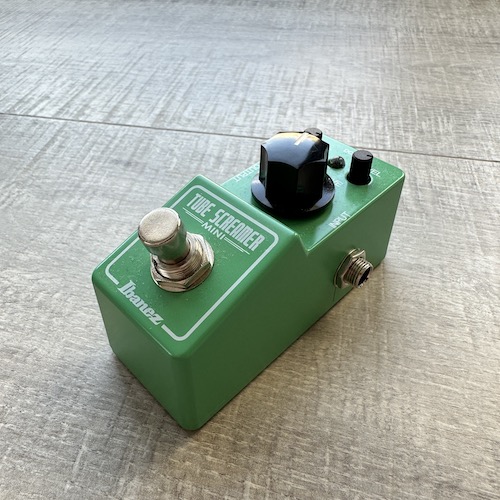
This is such a buzzword, really, but we couldn’t think of any other way to describe it! What we mean by “Amp-Like Gain” is using an overdrive pedal to achieve a dynamic overdrive sound that you can control just with your picking technique. Play softly, and the tone stays clean and crisp—but dig in, and the sound will overdrive and break up! It’s a great way to play and an excellent way to give your super-clean amp some extra tonal versatility.
This is a fantastic sound, but some people struggle with it because it can feel inconsistent. If you switch to a different guitar with different pickups or slightly change your picking attack, the response will vary. It takes time to adjust to this playing style, but the more you practice, the more natural it becomes.
Just keep playing, learning, and adapting—you’ll unlock a whole new way of playing! Imagine needing only one pedalto shape your entire tone?
Two Channel Amp
This is my favorite way to use an overdrive pedal-as a second channel for your amp! Set your amp up nice and clean, with high headroom, and then dial in your overdrive pedal to a fairly high-gain setting. This will give you both a clean tone and a gain tone to switch between.
So, if your amp only has one channel (like the Revv D20 does), you can use an overdrive pedal to turn it into a two-channel amp!
This is exactly what I’ve been doing with my Boss IR-2 (Full Review here). I’ve been using the clean setting on the IR-2, then running the Hot Toddy from JSA Pedals (Full Review here) as my overdrive and gain sound-and finally, adding a boost at the end for solos. I find this setup feels more natural and traditional.
The downside is that you’ll need to learn to control the volume to achieve that pushed crunch sound. If you’re only using one overdrive pedal, you’ll be limited to one drive sound, unless you manually adjust the pedal controls while playing.
So, you’ll either need to ride your guitar’s volume knob to get that pushed clean sound or consider adding another drive pedal for a third channel option.
Conclusion
So, those are our six ways to use an overdrive pedal! Hopefully, this has given you some inspiration and ideas on how to use your overdrive pedals in new ways. It can expand your tonal landscape, help you create new sounds, and even spark fresh inspiration.
If you want to pick up either the Behringer Klon or the Ibanez Tube Screamer Mini for yourself, you can find links to both below.
Did we miss a way to use an overdrive pedal? Drop us a message on our Instagram page or send us an email via our Contact page, we might have to put together a Part 2 with even more ways to use an overdrive pedal!
If you want to support the site then please give us a follow on Instagram and subscribe to our YouTube.
Gigs & Guitars Affiliate Links:
- Buy the Behringer Centaur Overdrive (Andertons Affiliate Link)
- Buy the Behringer Centaur Overdrive (Thomann Affiliate Link)
- Buy the Ibanez Tube Screamer Mini (Andertons Affiliate Link)
- Buy the Ibanez Tube Screamer Mini (Thomann Affiliate Link)
- Andertons Affiliate Link
- Thomann Affiliate Link
Check out our other Articles here
